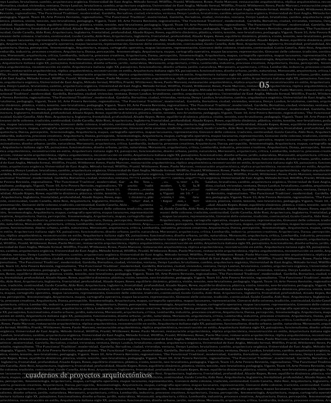Mapping emptiness: cartographic activations of empty space
Palabras clave:
Architecture, Maps, Operative cartography, Mapping emptiness, RepresentationResumen
Abstract
Maps have generally been used as documents that represent reality in an objective and allegedly neutral way. Maps do not just represent reality, however, they also construct it in a specific way. They activate a limited selection of parameters which allow for orienting a particular perspective on the world. This orientation of reality that is characteristic of maps opens up possibilities for the transformation of reality, which can be brought into play by architecture or other disciplines. We use the term operative cartography to refer to the production and use of maps to expand our conception of reality and promote its transformation. This article will discuss the cartographic activation of empty space. Through a series of examples, it looks at some of the ways in which mapping practices can inform our understanding of empty space. The examples, illustrating fi ve different ways of mapping emptiness, all involve the activation of empty space for the construction of a critical attitude toward mapping processes and the uses that they may have. The examples should serve to demonstrate how certain maps construct reality in a particular, oriented way through the activation of empty space. As a result, the permanent dialogue between reality and representation is enhanced, thereby opening up new possibilities for transforming the real.
Descargas
Descargas
Publicado
Número
Sección
Licencia
1. Los autores conservan los derechos de autor y garantizan a la revista el derecho de una Licencia Creative Commons Atribución-NoComercial-SinDerivar 4.0 Internacional que permite a otros compartir el trabajo con un reconocimiento de la autoría.
2. Los autores pueden establecer por separado acuerdos adicionales para la distribución no exclusiva de la versión de la obra publicada en la revista (por ejemplo, situarlo en un repositorio institucional o publicarlo en un libro).













